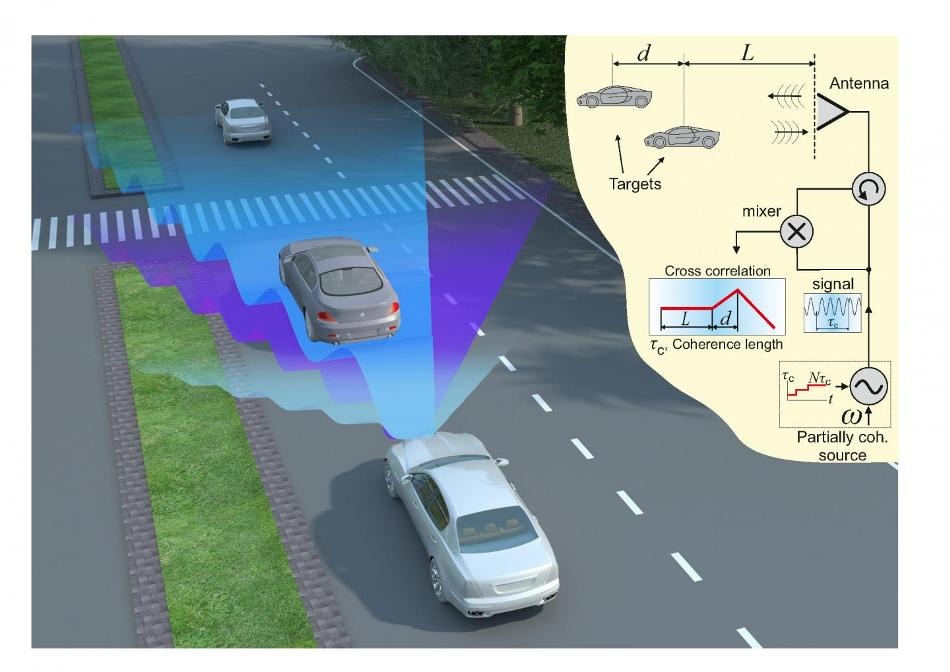Apr 3 2019
Initially, radar technologies were developed to spot and trace airborne military targets. Presently, they are mostly used to detect weather formations, motor vehicles, and geological terrain.
 Partially coherent radar operation schematics. (CREDIT: Nature Communications)
Partially coherent radar operation schematics. (CREDIT: Nature Communications)
So far, researchers have assumed that radar resolution and accuracy are dependent on the range of frequencies or radio bandwidth used by the devices. However, a new Tel Aviv University research discovers that a method based on optical coherence tomography (OCT) needs little to no bandwidth to precisely form a high-resolution map of a radar’s neighboring environment.
We’ve demonstrated a different type of ranging system that possesses superior range resolution and is almost completely free of bandwidth limitations. The new technology has numerous applications, especially with respect to the automotive industry. It’s worth noting that existing facilities support our new approach, which means that it can be launched almost immediately.
Prof. Pavel Ginzburg, School of Electrical Engineering, TAU.
Prof. Pavel Ginzburg is one of the principal authors of the study.
The new study was jointly led and carried out by Prof. Ginzburg, Vitali Kozlov, Rony Komissarov, and Dmitry Filonov, all from TAU’s School of Electrical Engineering. It was reported on March 29th, 2019 in Nature Communications.
It was widely assumed that radar resolution was in proportion with the bandwidth used, which means with a wider range of frequencies, the detection of objects will be more accurate. However, the TAU scientists have now shown that low-bandwidth radars can attain similar performance at a reduced cost and without broadband signals by making use of the coherence property of electromagnetic waves.
If two wave sources have the same frequency, the same waveform, and a constant phase difference, they are said to be completely coherent. The innovative “partially coherent” radar is as effective as traditional “coherent” radars at resolving targets in experimental situations.
Our concept offers solutions in situations that require high-range resolution and accuracy but in which the available bandwidth is limited, such as the self-driving car industry, optical imaging, and astronomy. Not many cars on the road today use radars, so there’s almost no competition for allocated frequencies. But what will happen in the future, when every car will be equipped with a radar and every radar will demand the entire bandwidth? We’ll find ourselves in a sort of radio traffic jam. Our solutions permit drivers to share the available bandwidth without any conflict.
Vitali Kozlov, School of Electrical Engineering, TAU.
Our demonstration is just the first step in a series of new approaches to radiofrequency detectors that explore the impact of low-bandwidth radars on traditional fields. We intend to apply this technology to previously unexplored areas, like rescue operations—sensing if an individual is buried in a collapsed building—or street mapping—sensing if a child is about to cross the street behind a bus that conceals him.
Prof. Pavel Ginzburg, School of Electrical Engineering, TAU.
An ERC grant and Kamin supported the Research for the study, and it was carried out at TAU’s Radio Physics Laboratory’s anechoic chamber.